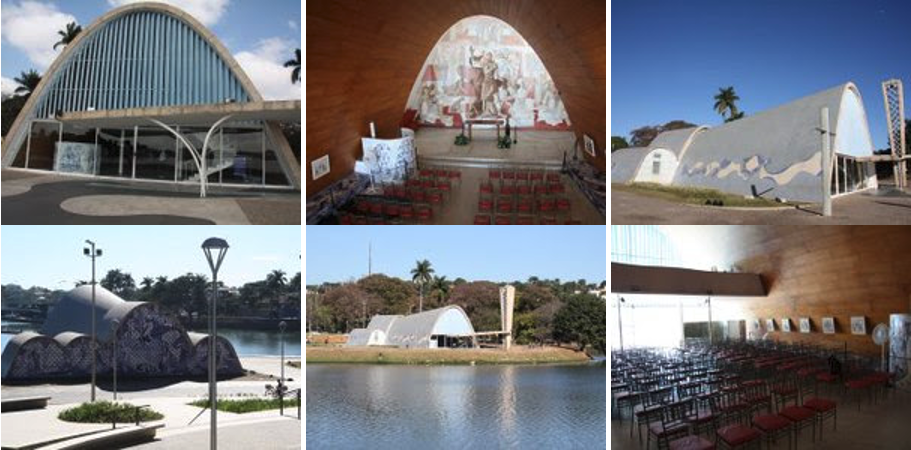- Home
- About APT
- Publications/Resources
- Conferences & Training
- Chapters
- Chapters Overview
- Alberta
- Atlantic Canada
- Australasia
- Central Plains
- APT Canada
- Delaware Valley
- Eastern Great Lakes
- Europe
- Hawaii-Pacific Islands
- Latin America and Caribbean
- Northeast
- Northwest
- Ohio Valley
- Ottawa Valley/Outaouais
- Québec
- Rocky Mountain
- South Asia
- Southeast
- Texas
- Washington D.C.
- Western Great Lakes
- Western
- Committees
- Students
- Partners
 Niemeyer's Chapel at Belo Horizonte, Brazil
IMPACTS OF FORENSIC CONSERVATION AND THE CONTINUING MANAGEMENT OF CHANGE AT A WORLD HERITAGE SITE: NIEMEYER'S CHAPEL AT BELO HORIZONTE, BRAZIL
Thursday, February 8, 2024 Marco Antônio Penido de Rezende Registration Fee Non-Members: $35 1 LU/HSW/PDH Continuing Education Unit “Pampulha was the beginning of everything”. With these words, the famous Brazilian architect, Oscar Niemeyer, defined the importance of these early works in the development of his architecture. Pampulha is an artificial lake in Belo Horizonte City, Minas Gerais, Brazil, around which Niemeyer constructed, during the forties, five innovative concrete buildings: two clubs, a dancing house, a casino and a chapel. The centerpiece of the complex is the parabolic concrete Chapel, now a World Heritage Monument. During the 1980s, cracks had been noticed in the chapel vault. Due to its proximity from the lake the firsts hypotheses focused on the foundation. However, further investigative studies comparing the original structural engineering design documents and construction photos revealed that one of the expansion joints was never executed. Executing this expansion joint as specified in the original construction specifications eliminated the stress cracking. Execution deficiencies, however, led to water infiltration and additional corrective work required to complete the restoration. The project shows the complexity of restoring modern architectural monuments, the varied kinds of information required to make sound decisions, the risks inherent to all intervention efforts and the need continuing management of change. Following an overview of the chapel and the context of its production, the presentation will focus on the restoration process itself, with emphasis on how the decision concerning opening the new expansion joint was made, its execution and subsequent work undertaken to preserve this important Brazilian Modern Architecture Monument for future generations. Presenter Dr. Marco Antônio Penido de Rezende, Ph.D, is an Architect and full professor at the Federal University of Minas Gerais, Brazil where he teaches in the fields of preservation technology, historical building construction, traditional and historical building techniques, and vernacular architecture. In addition to teaching, he has been active in research and has consulted on these topics for more than 30 years. He was professionally trained in Brazil, receiving an Architecture Degree from UFMG in 1987, and a PhD in Construction Technology from the University of São Paulo, Brazil in 2003. Upon completing his studies in Brazil, Dr. Rezende spent one year on Postdoctoral studies at the Historic Preservation Program, University of Oregon, USA. A Research Productivity Grant fellow of the Brazilian National Council for Scientific and Technological Development, Dr. Rezende is the editor of 3 books and author of 2 books, 34 book chapters and 101 articles in journals and conference proceedings. He is an elected board member of APTI and past president of APT's Latin America and Caribbean Chapter. Learning objectives: After attending this training course attendees will be able to:
|
